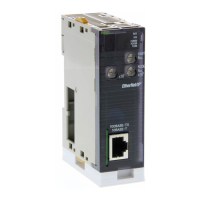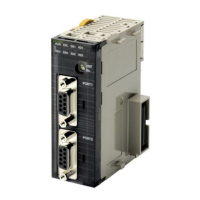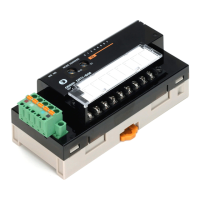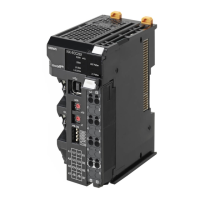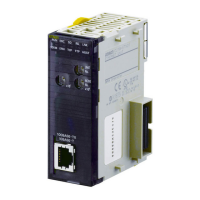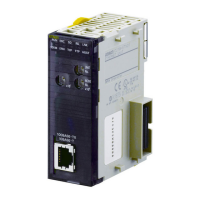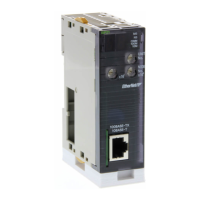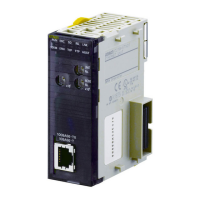291
Communications Timing Section 9-4
Note 1. If more than eight communications instructions are being used, then exclu-
sive control must be performed to make sure that not more than eight are
executed at the same time. Refer to descriptions of network communica-
tions instructions in the CS/CJ-series Communications Commands Refer-
ence Manual (W342).
2. The same communications port numbers are used by both the communi-
cations instructions (SEND(090), RECV(098), and CMND(490)) and the
PROTOCOL MACRO instruction (PMCR(260)). The same port number
cannot be used by more than one of these instructions at the same time.
9-4-2 Communications Control Signals and Communications Timing
If CTS control is enabled in the Setup Area, the RTS output signal will be
turned ON from the Board or Unit and the send process will go on standby
until the CTS input signal turns ON. Either release this busy status by incorpo-
rating the RTS output signal for the CTS input signal at the host computer, or
loop the RTS output signal back to the CTS input signal at the Unit or Board.
Note The status of the RTS and CTS signals can be confirmed in the Transmission
Control Signal Status in the Status Area. Refer to page 280.
9-4-3 Flags for Network Communications
This section describes the flags in the Auxiliary Area that are used when exe-
cuting SEND(090), RECV(098), and CMND(490).
Communications Port
Enabled Flags
A Communications Port Enabled Flag turns ON when SEND(090),
RECV(098), and CMND(490) can be executed. The flag will turn OFF during
execution of these commands and turn ON again when the command execu-
Board or Unit Logical port CPU Unit
Instruction 1
Instruction 2
Instruction 3
Instruction 4
Instruction 5
Instruction 6
Instruction 7
Instruction 8
One port must be specified for each instruction.
5
1
6
3
7
2
0
4

